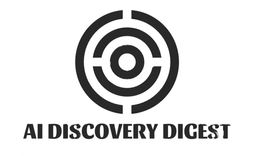Welcome to the world of eco-friendly packaging, where sustainability meets innovation! In today’s fast-paced and environmentally conscious society, traditional packaging methods are facing growing scrutiny for their detrimental impact on our planet. Fortunately, artificial intelligence (AI) has emerged as a game-changer in crafting sustainable packaging solutions that not only reduce waste but also enhance efficiency.
Join us on this exciting journey as we explore how AI is revolutionizing the way we design and create eco-friendly packaging. Get ready to be inspired by real-life examples of companies harnessing the power of AI to transform the future of packaging. Let’s dive in and discover how technology is driving positive change for both businesses and Mother Nature alike!
The Negative Impact of Traditional Packaging on the Environment
Traditional packaging has long been a staple in our society, providing convenient ways to transport and display products. However, it comes at a significant cost to the environment. The negative impact of traditional packaging on the environment is undeniable.
One of the major issues with traditional packaging is its excessive use of resources. Many types of packaging require large amounts of energy, water, and raw materials for production. This not only depletes natural resources but also contributes to pollution through emissions and waste.
Traditional packaging often ends up in landfills after use. Plastics, which are commonly used in packaging materials, take hundreds of years to decompose. As a result, they contribute to the growing problem of plastic pollution in oceans and ecosystems worldwide.
Transportation plays a significant role in environmental damage caused by traditional packaging. Bulkier and heavier packages require more fuel for shipping and result in higher carbon emissions. This increased reliance on fossil fuels exacerbates climate change and air pollution.
The disposal process of traditional packaging poses challenges as well. Improperly disposed packages can contaminate soil and water sources with harmful chemicals or leach into the environment over time.
The negative impact inflicted by traditional packaging methods calls for urgent action towards adopting more sustainable alternatives. By shifting towards eco-friendly solutions such as biodegradable materials or reducing unnecessary waste through innovative design practices, we can reduce our ecological footprint significantly.

How AI is Revolutionizing Packaging Design
AI is making waves in various industries, and packaging design is no exception. With its ability to analyze vast amounts of data and generate innovative solutions, AI is revolutionizing the way we approach packaging design.
One key area where AI is transforming packaging design is through optimization. By leveraging machine learning algorithms, AI can analyze factors such as product dimensions, weight, and shipping requirements to create custom packaging designs that minimize waste and maximize efficiency. This not only reduces environmental impact but also helps businesses save on materials and shipping costs.
Another way AI is revolutionizing packaging design is through the use of advanced image recognition technology. By training computer vision models with thousands of images of products and their associated packages, AI can quickly identify patterns and recommend optimal package sizes or materials for specific products. This not only ensures a better fit but also eliminates unnecessary excess space in packages.
AI-powered systems are enabling designers to explore new possibilities by generating alternative designs based on predefined criteria or constraints. These systems can consider factors like sustainability goals, cost-effectiveness, branding requirements, and consumer preferences to come up with innovative packaging solutions that meet multiple objectives simultaneously.
Machine learning algorithms can help predict potential issues during the production process by analyzing historical data from manufacturing lines. Identifying possible bottlenecks or inefficiencies beforehand allows manufacturers to make necessary adjustments before production starts – saving time, resources, and reducing waste.
AI’s impact on packaging design cannot be overstated. From optimizing material usage to creating stunning yet sustainable designs – the integration of artificial intelligence has already begun reshaping the industry towards a more eco-friendly future.
Examples of Companies Using AI for Sustainable Packaging
1. Amazon:
As one of the largest e-commerce companies in the world, Amazon is committed to reducing its environmental impact through sustainable packaging practices. The company has implemented AI technology to optimize packaging designs and reduce waste. By analyzing customer data and product specifications, AI algorithms determine the most efficient box size for each item, minimizing the need for excessive packaging materials.
2. Nestlé:
Nestlé, a global food and beverage company, has also embraced AI to develop eco-friendly packaging solutions. Through machine learning algorithms, they can assess various factors like material composition, recyclability, and carbon footprint when designing their packages. This allows them to make informed decisions that result in more sustainable packaging options without compromising product quality or safety.
3. IBM:
IBM is utilizing AI technology called “Cognitive Packaging Advisor” to create environmentally friendly packaging solutions for businesses across different industries. This system analyzes vast amounts of data related to consumer behavior and sustainability metrics to generate personalized recommendations on how companies can improve their packaging design while reducing waste.
4. DS Smith:
DS Smith is an international supplier of sustainable fiber-based packaging solutions that leverages AI-powered systems like “BoxSizer” and “PackRight.” These tools enable customers to optimize their package sizes based on product dimensions while ensuring maximum protection during transport. By using advanced analytics provided by these technologies, DS Smith helps businesses minimize material usage and reduce CO2 emissions throughout the supply chain.
5. L’Oréal:
L’Oréal uses AI algorithms combined with 3D printing technology for designing innovative cosmetics containers with reduced environmental impact. By simulating different shapes and structures virtually before production begins, they can identify optimal designs that use less plastic or incorporate recycled materials while maintaining functionality and aesthetics.
These are just a few examples demonstrating how artificial intelligence is revolutionizing sustainable packaging practices across various sectors globally.
Challenges and Limitations of AI in Sustainable Packaging
While AI has tremendous potential in revolutionizing packaging design for sustainability, it is not without its challenges and limitations. One of the main challenges lies in the accuracy of data input. In order for AI to effectively generate sustainable packaging solutions, it relies on accurate and reliable data about materials, manufacturing processes, and environmental impact. However, obtaining comprehensive and up-to-date data can be a daunting task.
Another limitation is the complex nature of sustainable packaging decisions. Designing eco-friendly packages involves considering various factors such as product requirements, customer preferences, cost-effectiveness, and environmental impact. While AI algorithms can analyze vast amounts of information quickly, they may struggle to account for subjective human values or make nuanced decisions that consider multiple trade-offs.
There are technical limitations to consider when implementing AI in sustainable packaging practices. The development and implementation of AI systems require significant investments in technology infrastructure as well as skilled personnel capable of managing these systems effectively.
Ethical considerations also come into play when using AI in sustainable packaging design. As with any technology driven by algorithms and machine learning models, bias can seep into decision-making processes if not closely monitored. It is crucial to ensure that the use of AI does not perpetuate existing biases or overlook important social or cultural factors related to sustainability.
Conclusion
AI has emerged as a game-changer in the quest for eco-friendly packaging solutions. Its ability to analyze vast amounts of data and generate innovative designs has revolutionized the way companies approach sustainability in packaging.
By leveraging AI, businesses can reduce waste, optimize material usage, and create packages that are both functional and environmentally friendly. From optimizing box sizes to developing biodegradable materials, AI is enabling companies to make significant strides towards sustainable packaging practices.
It’s important to acknowledge that while AI offers immense potential, there are still challenges and limitations that need to be addressed. The technology is not without its flaws and requires ongoing refinement to ensure accuracy and effectiveness.
Human creativity and expertise must continue to play a vital role in balancing sustainability with aesthetics and functionality. While AI can generate ideas based on data-driven insights, it takes human ingenuity to evaluate those ideas within the context of real-world constraints.
Despite these challenges, the future looks promising for integrating AI into sustainable packaging design. As technology advances further and more companies adopt these tools, we can expect even more innovative solutions that align with our environmental goals.
Harnessing the power of artificial intelligence in crafting eco-friendly packaging solutions, we have an opportunity to significantly reduce our impact on the environment while still meeting consumer demands. The transformative potential of AI combined with human creativity holds great promise for creating a greener future—one package at a time! So let’s embrace this exciting intersection between technology and sustainability as we work towards a more environmentally conscious world.


